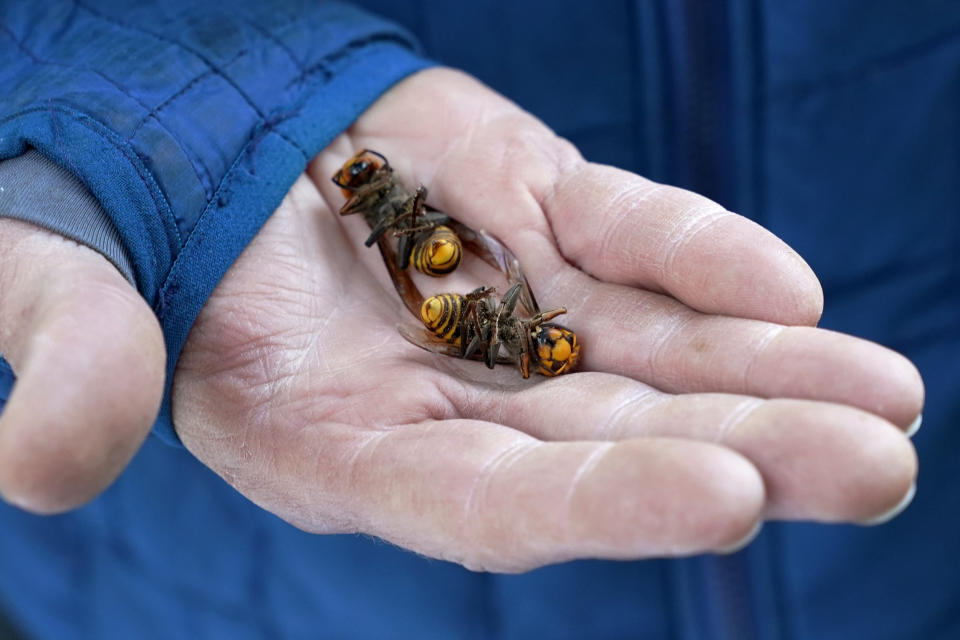'Murder hornet' nest had potential to spawn almost 200 queens in Washington state
Scientists found nearly 200 potential queen hornets in the “murder hornet” nest that was successfully destroyed by Washington state agriculture officials in October.
The invasive 2-inch Asian giant hornet, or vespa mandarinia, has drawn concern over the species' ability to slaughter honeybee colonies within a span of a few hours. Entomologists attached radio trackers to three hornets that had been caught in a trap, and one of those led them to a nest in Blaine, Washington, that was later destroyed.
The nest contained 108 cells that looked like queens ready to emerge while another 76 had already emerged, according to Sven Spichiger, managing entomologist for the Washington State Department of Agriculture. It’s unclear how many more queens could have spawned from the nest because the hornets can destroy their cells after they emerge.
“A portion of [queens] actually will never end up surviving because they didn’t get enough nutrition before leaving the nest,” Spichiger said. “The rest of them that leave the nest, should they get proper nutrition, will mate with males should there be males waiting outside the nest.”
Queens that survive typically hibernate during the winter and create new colonies in the spring, Spichiger said. The lead entomologist hopes to eradicate the species if possible through tracking worker hornets and using those to locate more nests.
“I'm very encouraged by the support we've received from the public, and our citizen scientists,” Spichiger said. “And with that type of an effort and with everybody looking and immediately calling them in, we actually do stand a strong chance. So, cautiously optimistic we will achieve that goal.”

Workers in protective suits used foam to seal crevices in the nest found last month, wrapped the tree in cellophane and then used a vacuum hose to suck out the hornets. Ninety-eight worker hornets were captured through the vacuum and will be used for scientific research.
“It really seems like we got there just in the nick of time as our original vacuum extraction seemed to only give us workers,” Spichiger said. “We only got queens four days later after we cracked it open, and so if any queens had already left the nest, it was just a few.”
After opening the nests, researchers found 190 larvae, 112 worker hornets and nine male hornets in addition to the queen count. The nest contained six combs with at least 776 cells, but Spichiger said some outer cells may have been damaged upon removal and not counted.
The Asian giant hornet was dubbed the “murder hornet” after the term circulated on Twitter in May following a New York Times report on efforts to stop the species from annihilating honeybees. The name caught on, typically used by people colloquially and in headlines to describe the invasive species
“I'm not a big fan of it. These are not going to hunt you down and murder you,” Spichiger said. If you walk into a nest your life is probably in danger. That's the sheer reality, but your life is in danger if you walk into the nest of other stinging insects as well, especially if you're allergic.”
The species has longer stingers with more toxic venom that could pose a danger to people if the insects feel threatened. And unlike honeybees, the Asian giant hornets can sting repeatedly, entomologist Chris Looney said in a video posted to Washington State Department of Agriculture YouTube earlier this year.
The public is encouraged to report a possible sighting to local authorities rather than attempting to kill the hornets or nests.

